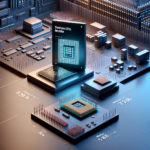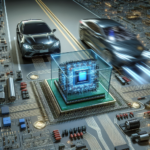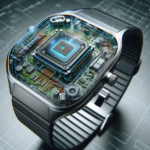The Role of CPUs in Predictive Maintenance Systems
The Role of CPUs in Predictive Maintenance Systems
Predictive maintenance systems have revolutionized the way industries manage their machinery and equipment. By leveraging advanced technologies, these systems can predict when a machine is likely to fail, allowing for timely maintenance and reducing downtime. At the heart of these systems lies the Central Processing Unit (CPU), which plays a crucial role in data processing, analysis, and decision-making. This article delves into the role of CPUs in predictive maintenance systems, exploring their functions, benefits, and future prospects.
Understanding Predictive Maintenance
What is Predictive Maintenance?
Predictive maintenance is a proactive approach to maintenance that uses data analysis tools and techniques to detect anomalies in equipment and predict when maintenance should be performed. This method aims to minimize unexpected equipment failures and extend the lifespan of machinery.
Key Components of Predictive Maintenance Systems
Predictive maintenance systems typically consist of the following components:
- Sensors: These devices collect real-time data from machinery, such as temperature, vibration, and pressure.
- Data Storage: A system to store the vast amounts of data collected by sensors.
- Data Processing Unit: Often the CPU, this unit processes and analyzes the data to identify patterns and predict failures.
- Software: Algorithms and machine learning models that interpret the data and provide actionable insights.
- User Interface: Dashboards and alerts that inform maintenance teams of potential issues.
The Role of CPUs in Predictive Maintenance Systems
Data Collection and Processing
The CPU is responsible for processing the raw data collected by sensors. This involves filtering out noise, normalizing the data, and converting it into a format suitable for analysis. Given the high volume of data generated by modern industrial equipment, this task requires significant computational power.
Real-Time Analysis
One of the critical functions of the CPU in predictive maintenance systems is real-time data analysis. The CPU runs complex algorithms and machine learning models to identify patterns and anomalies in the data. This real-time analysis is crucial for timely maintenance interventions, preventing unexpected equipment failures.
Machine Learning and AI Integration
Predictive maintenance systems often incorporate machine learning and artificial intelligence (AI) to improve their predictive capabilities. The CPU plays a vital role in training these models, which involves processing large datasets and performing numerous calculations. Once trained, these models run on the CPU to provide real-time predictions and insights.
Decision-Making and Automation
Based on the analysis, the CPU can make decisions regarding maintenance actions. For instance, it can trigger alerts, schedule maintenance tasks, or even initiate automated responses, such as shutting down a machine to prevent damage. This decision-making capability is essential for the efficiency and effectiveness of predictive maintenance systems.
Benefits of Using CPUs in Predictive Maintenance Systems
Enhanced Processing Power
Modern CPUs offer immense processing power, enabling them to handle the complex computations required for predictive maintenance. This ensures that data is processed quickly and accurately, leading to timely and reliable predictions.
Scalability
CPUs are highly scalable, making them suitable for predictive maintenance systems of all sizes. Whether it’s a small manufacturing plant or a large industrial facility, CPUs can be scaled to meet the specific needs of the system.
Energy Efficiency
Advancements in CPU technology have led to significant improvements in energy efficiency. This is particularly important for predictive maintenance systems, which often operate continuously. Energy-efficient CPUs help reduce operational costs and minimize the environmental impact.
Integration with Other Technologies
CPUs can easily integrate with other technologies used in predictive maintenance systems, such as IoT devices, cloud computing, and edge computing. This integration enhances the overall functionality and performance of the system.
Challenges and Considerations
Data Security
With the increasing reliance on data, ensuring its security is paramount. CPUs must be equipped with robust security features to protect sensitive information from cyber threats.
Cost
While CPUs offer numerous benefits, they can also be expensive, particularly high-performance models. Organizations must weigh the costs against the potential benefits when implementing predictive maintenance systems.
Complexity
The complexity of predictive maintenance systems can pose challenges in terms of implementation and maintenance. Skilled personnel are required to manage and operate these systems effectively.
Future Prospects
Advancements in CPU Technology
As CPU technology continues to advance, we can expect even greater processing power, energy efficiency, and integration capabilities. These advancements will further enhance the performance of predictive maintenance systems.
Integration with Edge Computing
Edge computing, which involves processing data closer to the source, is becoming increasingly popular in predictive maintenance. CPUs will play a crucial role in this paradigm, enabling real-time data processing and analysis at the edge.
AI and Machine Learning Innovations
Ongoing innovations in AI and machine learning will lead to more sophisticated predictive models. CPUs will be essential in training and running these models, providing even more accurate and reliable predictions.
FAQ
What is the role of the CPU in predictive maintenance systems?
The CPU is responsible for processing and analyzing data collected by sensors, running machine learning models, making decisions regarding maintenance actions, and integrating with other technologies used in predictive maintenance systems.
Why is real-time data analysis important in predictive maintenance?
Real-time data analysis allows for timely maintenance interventions, preventing unexpected equipment failures and reducing downtime. The CPU plays a crucial role in performing this real-time analysis.
How do CPUs contribute to the scalability of predictive maintenance systems?
CPUs are highly scalable, making them suitable for predictive maintenance systems of all sizes. They can be scaled to meet the specific needs of the system, whether it’s a small manufacturing plant or a large industrial facility.
What are the challenges associated with using CPUs in predictive maintenance systems?
Challenges include ensuring data security, managing costs, and dealing with the complexity of implementing and maintaining predictive maintenance systems. Skilled personnel are required to manage these systems effectively.
What future advancements can we expect in CPU technology for predictive maintenance?
Future advancements in CPU technology will likely include greater processing power, improved energy efficiency, and enhanced integration capabilities. These advancements will further enhance the performance of predictive maintenance systems.
Conclusion
The role of CPUs in predictive maintenance systems is indispensable. From data collection and real-time analysis to machine learning integration and decision-making, CPUs are at the core of these advanced systems. As technology continues to evolve, the capabilities of CPUs will only expand, leading to even more efficient and effective predictive maintenance solutions. Organizations that leverage these advancements will be well-positioned to minimize downtime, reduce costs, and extend the lifespan of their machinery.




